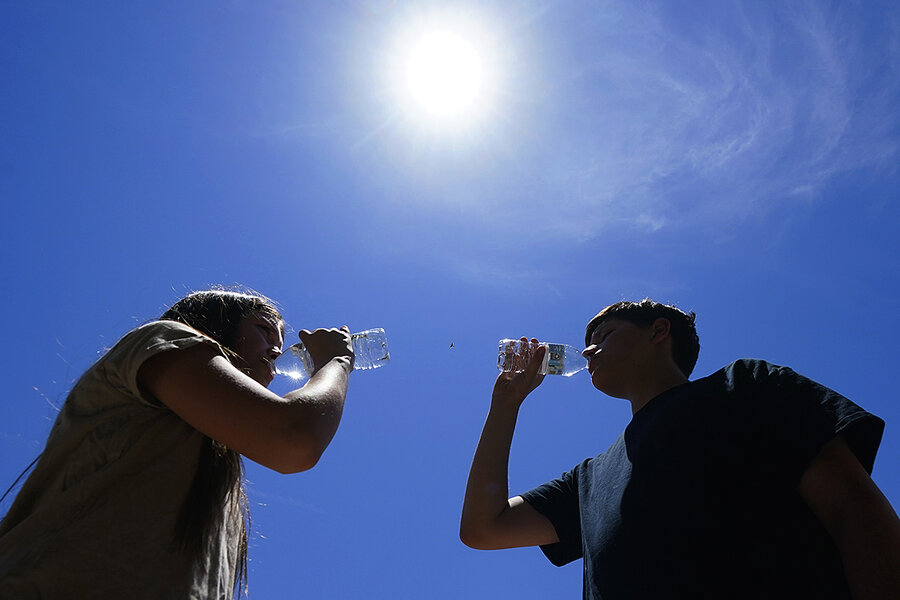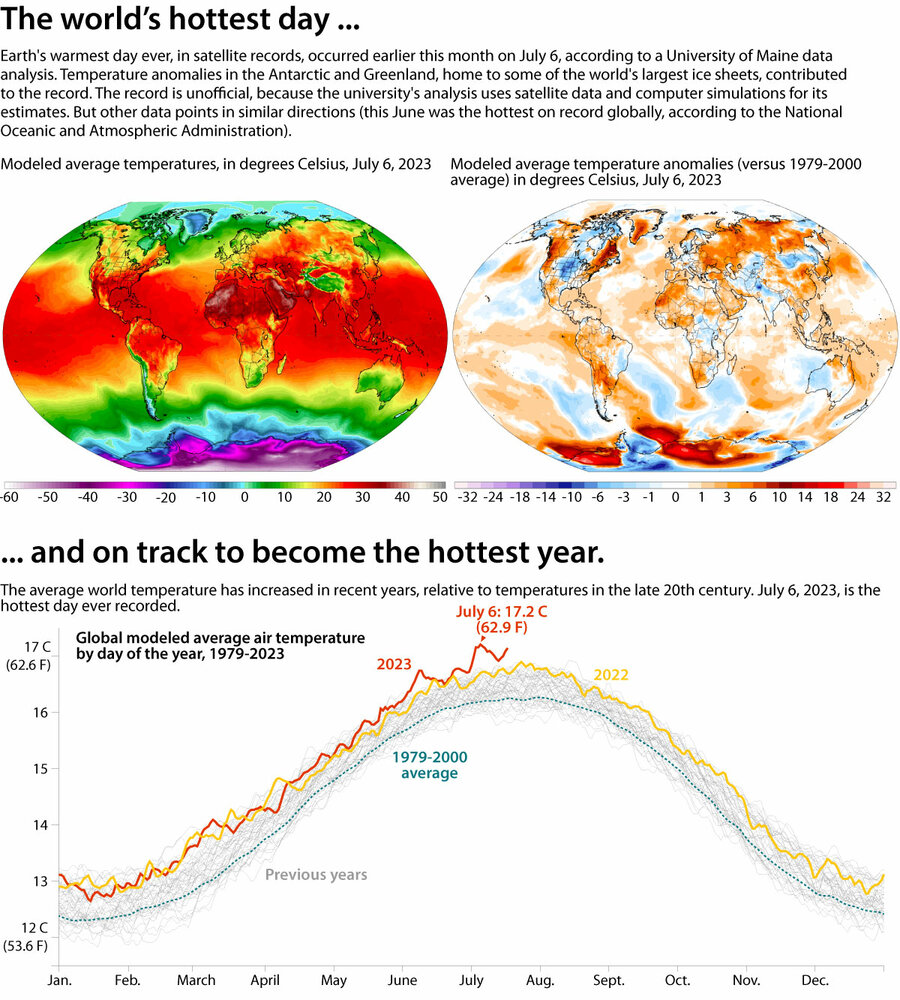In charts: Amid searing heat, the hottest day ever?
Loading...
Was July 6, 2023, the hottest day in recorded human history? It is a statement that makes you sit up in your chair.
Our charts here look deeper at that claim. They come from the University of Maine, where a tool created to analyze climate data came to the conclusion that July 6 and the days before it were the hottest the planet has seen in satellite records going back more than four decades.
The data needs further analysis. The National Oceanic and Atmospheric Administration, for one, has counseled caution before jumping to conclusions. Yet, in some sense, whether it was the hottest day doesn’t really matter.
Why We Wrote This
A claim that July 6 was the hottest day ever deserves scrutiny. But regardless, it can be a useful wake-up call for the world to consider how thoroughly the abnormal is becoming normal – and what should be done.
Climate trends are well-established and, in many quarters, the subject of a great deal of alarm. These charts don’t really tell the story only of one day. They tell the same story that has been told for years, if not decades. As human-caused emissions of heat-trapping gases warm the planet, they lead to new weather extremes and human suffering.
Today, for example, Phoenix notched its 20th straight day of highs above 110 degrees Fahrenheit. And on multiple nights there recently, temperatures have failed to dip below 90 F. Heat records have also been reported elsewhere in the United States, and in Italy, France, Spain, and parts of China.
Communities are straining to keep residents safe and supplied with drinking water. One new study estimates that last summer’s record heat in Europe cost more than 61,000 human lives.
Yet, if extreme conditions raise alarms, the results of climate change are incremental. An unusual heat wave breaks, a storm passes, and a sense of normalcy returns. What our charts today do – dramatically – is show how thoroughly the abnormal is becoming normal.
There’s vital nuance to consider. Some parts of the planet, even sweltering ones like India, weren’t unusually hot on July 6. And factors other than climate change are almost certainly at play, such as the return of the El Niño pattern in the Pacific Ocean, which generally raises global temperatures. Yet climate scientists say unequivocally that such periods of extreme heat are growing more frequent and severe due to climate change. Shifts are widespread and particularly pronounced in polar regions.
When will the world acknowledge the rising cost enough to take the steps needed to break the pattern?
Scientists have laid out a clear path toward stabilizing Earth’s temperatures: to cut greenhouse emissions as fast as possible, aiming for net zero by 2050. The transition toward cleaner energy sources is underway and accelerating. From batteries and vehicles to buildings and farms, innovation is happening. Climate experts say what’s needed is more and faster.








